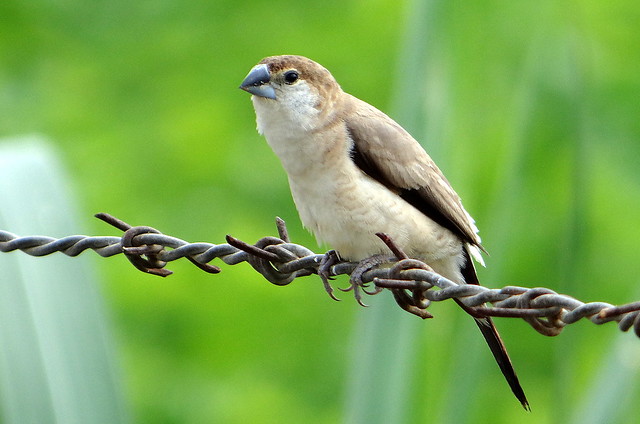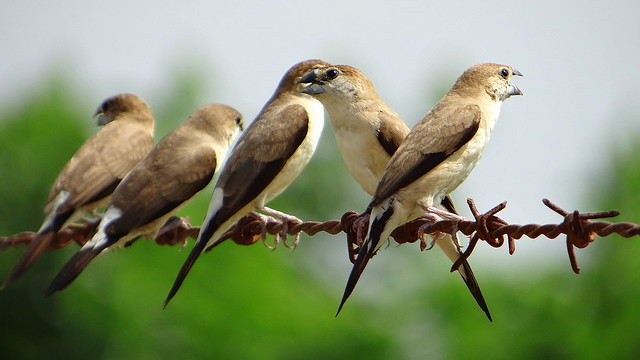How I overdosed on the Indian Silverbill, 011113
November 3, 2013
When you’ve been fasting, you tend to break your fast…and overdo it! I’d not seen anything of Indian birds for a longish time now, and when we went to
to help my friend Shangon celebrate the life of her husband, who passed away in 2005, I just walked around the school building while the speeches were going on.
Just behind the toilets,a barbed wire fence separated the High School property from a field of millet; and there, I was delighted to find a group of
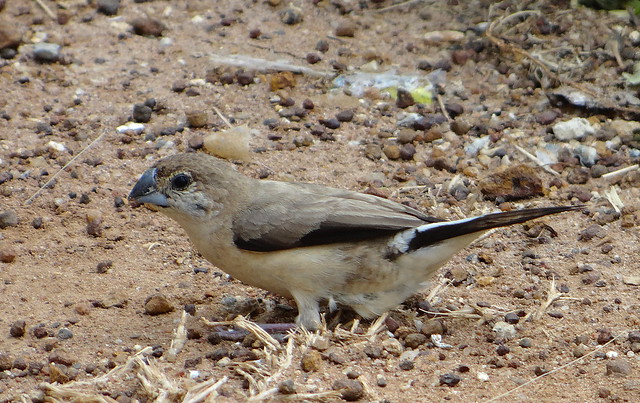 and sitting on the fence, or the telephone wires.
and sitting on the fence, or the telephone wires.
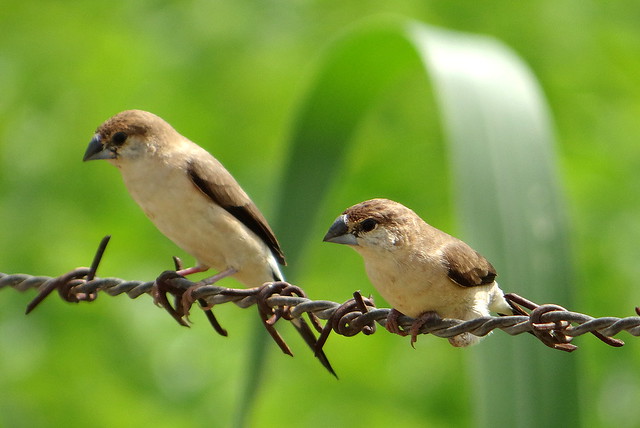
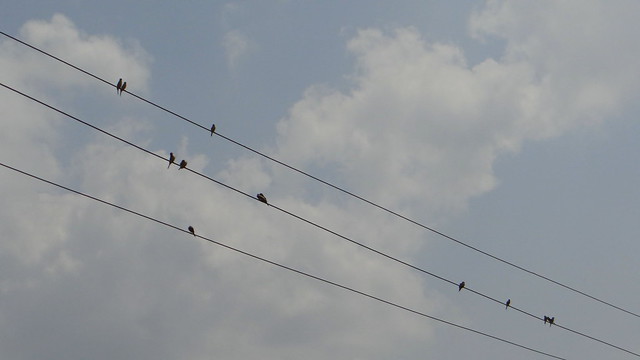 So I just clicked away happily!
So I just clicked away happily!
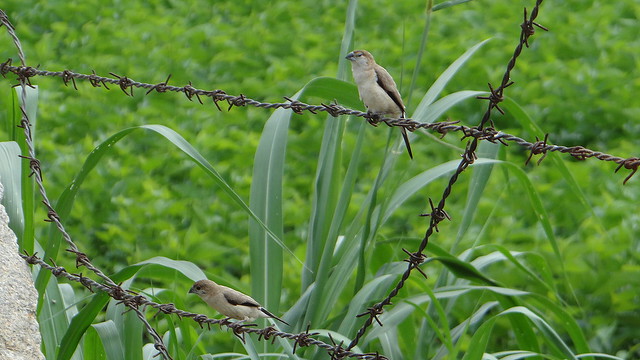 The Indian Silverbill or White-throated Munia (Lonchura malabarica), the Wiki says, is a small passerine (sparrow-like) bird, which forages in flocks in in grassland and scrub habitats....and in several villages!
The Indian Silverbill or White-throated Munia (Lonchura malabarica), the Wiki says, is a small passerine (sparrow-like) bird, which forages in flocks in in grassland and scrub habitats....and in several villages!
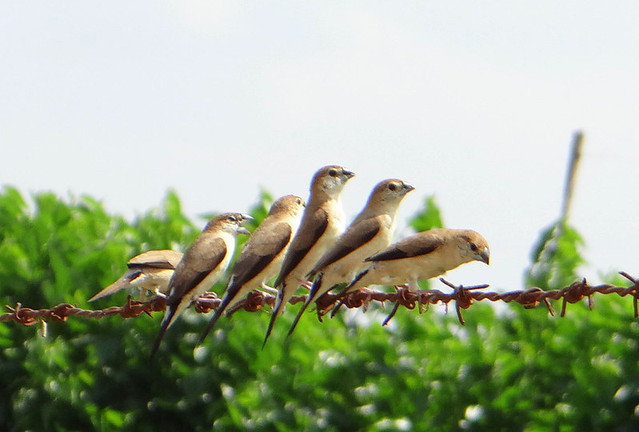 They are
Estrildid finches which means they are included in the genus "Lonchura", and are called weaver-finches.
They are
Estrildid finches which means they are included in the genus "Lonchura", and are called weaver-finches.
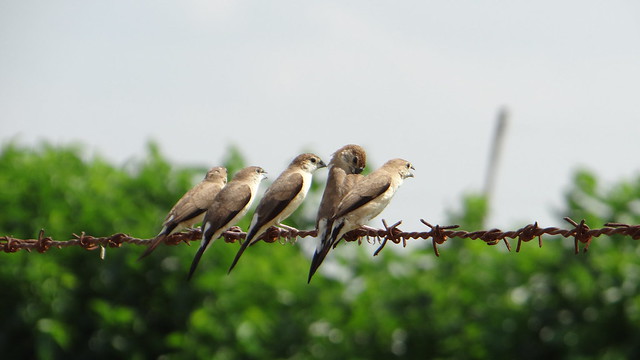 They are found in flocks of as many as 60 birds.
They are found in flocks of as many as 60 birds.
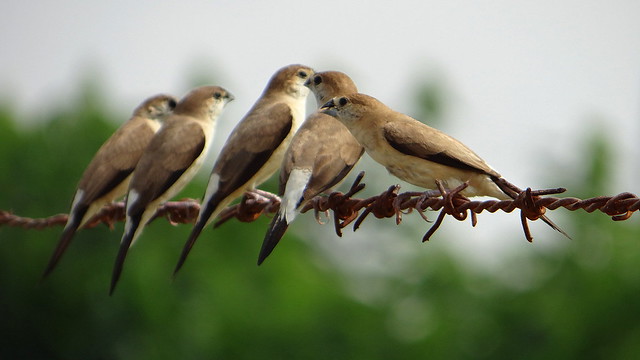 They feed on the ground or on low shrubs and grass stalks. They constantly utter a low cheeping or chirping contact call as they forage. They visit water and drink with a rapid sip and swallow action.
It feeds mainly on seeds, but also takes insects and has been known to visit nectar bearing flowers, such as those of Erythrina trees
The breeding season is spread out and varies with region. They nest in winter in southern India and after summer in northern India. They nest, an untidy ball of grasses with an opening on the side, is placed in low shrubs, often on thorny Acacia and are known to make use of the old nests of Baya Weaver sometimes even visiting those that are occupied by the weaver birds. They will sometimes build their nest below the platform nests of vultures or storks!
Here the beak structure, suited to the cracking and eating of seeds, can be clearly seen:
They feed on the ground or on low shrubs and grass stalks. They constantly utter a low cheeping or chirping contact call as they forage. They visit water and drink with a rapid sip and swallow action.
It feeds mainly on seeds, but also takes insects and has been known to visit nectar bearing flowers, such as those of Erythrina trees
The breeding season is spread out and varies with region. They nest in winter in southern India and after summer in northern India. They nest, an untidy ball of grasses with an opening on the side, is placed in low shrubs, often on thorny Acacia and are known to make use of the old nests of Baya Weaver sometimes even visiting those that are occupied by the weaver birds. They will sometimes build their nest below the platform nests of vultures or storks!
Here the beak structure, suited to the cracking and eating of seeds, can be clearly seen:
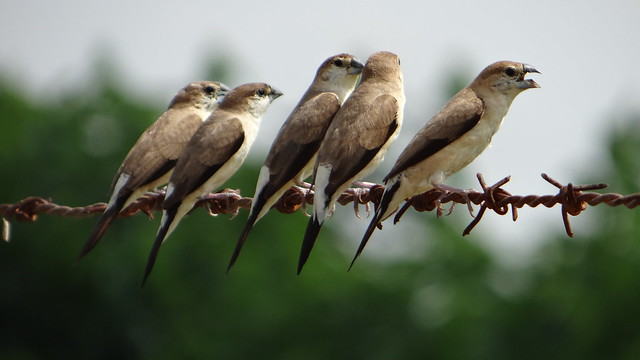 The clutch varies from 4 to 8 white eggs and these are incubated by both parents for about 11 days. Helpers may be involved in breeding as more than a pair are sometimes seen at a nest.
It's a pity I couldn't see any nests nearby!
I even took this ideo showing one bird foraging:
The clutch varies from 4 to 8 white eggs and these are incubated by both parents for about 11 days. Helpers may be involved in breeding as more than a pair are sometimes seen at a nest.
It's a pity I couldn't see any nests nearby!
I even took this ideo showing one bird foraging:
The Indian Silverbill brought me back to Indian birding, and what a delightful start it was!

